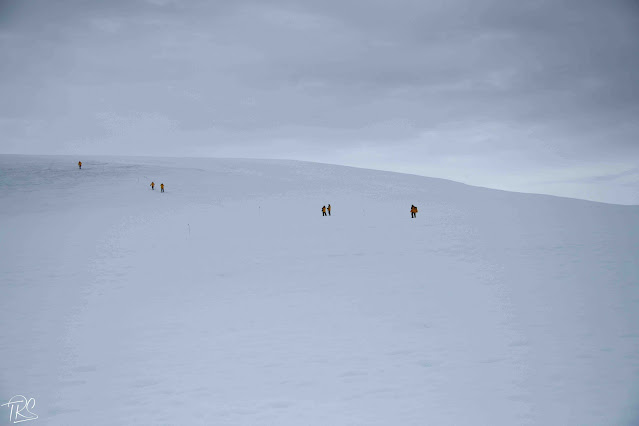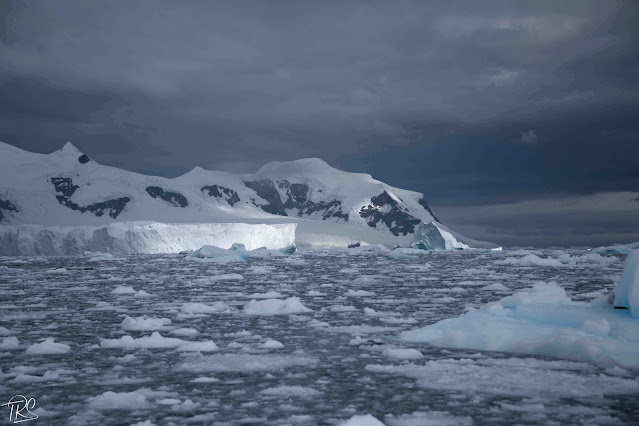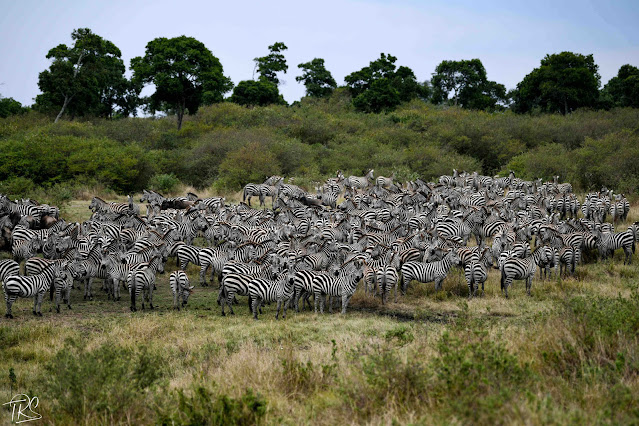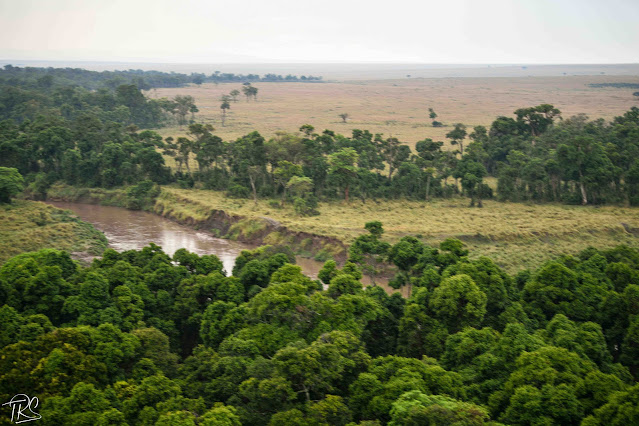Jan 2020
Ever saw the earth with the South Pole in center? Barring Antarctica, it is almost water all around. Antarctica is fully surrounded by Southern Ocean, which has borders (yes, really) with oceans up North.
[Our planet, from a South Pole perspective]
Antarctica is about 4.2 times the size of India and its size doubles in winter with expanding ice shelf (Yes, all ports become inland towns during winter!). 98% of the land is covered by ice that is 2 to 3 km thick. If the ice melts, sea level everywhere would rise 60 meters.
Antarctica holds 70% of all fresh water in the planet; yet is technically a desert (No rains . No vegetation. Extreme temperatures). Temperature at the coast is 0 deg C in summer and -40 in winter. As you go interior, it is -30 deg C colder. There are no vertebrates in Antarctica. Just whales, seals, and a dozen species of birds. (Yes, penguins. Oh yes, Emperor penguins).
Slices of Antarctica are claimed by various countries but all claims are held in abeyance and anyone can go anywhere. All have agreed on rules to protect environment and wild life. All time zones converge in Antarctica; each country’s base uses its homeland’s time zone.
Antarctica attracts over 44,000 tourists each year. About half of them are form US or China.
Our cruise was fun.
Quark Expedition’s “Ocean Adventurer” was comfortable; can house 100 passengers and 50 staff. Quark call it an expedition; not a cruise. A certain level of uncertainty is part of the deal. Expeditions come in three formats: a landing, a zodiac cruise, ar standing on the deck and watching the ice scape.
[Our ship "Ocean Adventurer" in Antarctica]
[Ocean Adventurer, a closer look]
We joined the cruise ship at King George Island in South Shetland Islands in Antarctica. The ten days cruise goes along the Peninsula’s coastal islands, crosses the circle, all the way to Prospect Point in mainland Antarctica and back. Each day you do at least two expeditions: either a cruise on the Zodiac, or a landing through the Zodiac.
Going on a zodiac cruise is half the fun. No seats. No seat belts. You just hold on to a rope. You could get doused by a generous and ice cold salt water spray. Or have tiny icicles pierce the skin on your face like a hundred needles. Or fingers going numb. Photographs? Only mad folks would try! I did.
[Zodiac cruises are fun]
Returning to home base after the zodiac cruise is fun too. At times the swell can bob up and down by 5 feet. You need to wait patiently and hop in at the best opportune moment. After a few trips, you understand why a sailor's grip is the most important thing to learn when you are transferring from one vessel to another and a miss could send you to sub zero degrees
[Returning to the cruise ship is equally adventurous]
No, we did not go to South Pole. Most people do not. That requires skiing for 3,000 km and the only thing you see is a red market identifying it as South Pole.
Our first cruise was around Graham Passage where the sea is covered with brash ice and the rocks are covered with thick ice blocks. The ice is probably a million years old. Slowly flowing out into the sea and breaking into ice bergs. Some ice bergs are bigger than Ramanujan IT City Complex! Ice has “cravasses” when pressures differ. The cravasses can develop into bigger cracks and the glacier could then calve (break away and fall into sea). You would not want to be in the neighbourhood at that time. Check out the YouTube video showing an ice berg the size of Manhattan calving out and collapsing into the ocean!
[Ice block with crevasses in Graham Passage]
We cruised to Danco Island, a picturesque spot in the Peninsula, and home for about 3,000 Gentoo penguins.
[Danco Island]
[Danco Island]
And landed in the beach. The beach is “violent surf meeting big ticket rocks covered by ice, sleet, and snow”. One has to be a mountaineer to climb up the beach to get to snow territory. And then plough one's way through deep, very deep, and powdery snow. Once you reach a dignified height, the view is spectacular.
We got to see a lot of Gentoo penguins playing on the shore. Penguins have right of way in Antarctica. When you see them going up or coming down, you step aside and stay at least 50 m away. Penguins do not comply with the 50 m rule and come quite close to inspect you and your camera. So, you can get some lovely shots without violating law.
[Danco Island: Gentoo Penguin]
A pod of Orca whales (about six in all) got curious and swam along the ship for an hour. Going all around the ship, bobbing up and down, revealing more than just the tail. Orcas rule the Antarctic; are at the top of the food chain; can eat anything in the ocean (including babies of humpback whales) but prefer Weddel seals (for their blubber). Orcas are ultra smart. When Orcas spot seals sunbathing on ice, they swim fast toward the ice, create a wave that can topple the ice, dislodge the seal, and dive under the ice in the very last minute to emerge on the other side in time to catch the seal!
[Orca Whales]
[Orca Whales]
In Melchior islands area, we could see rival base stations set up by Argentina and Chile to lay claim to the land. These stations are often unpopulated and unused for decades.
[Melchior Islands: Argentina base]
Crossing the narrow Lemaire Channel (11 km long, 1 km wide) with spectacular/tall mountains on either side is a rite of passage for any cruise in Antarctica. It was very early in the morning, quite cold with high speed wind, and lots of swell in the water (and therefore noticeable shake). But the upper decks were fully packed. Wife and I went quite early to catch the Kate Winslet spot and braved the weather. And enjoyed an awesome experience.
[Lemaire Channel]
[Lemaire Channel]
Our next stop, Yalour islands, is home for more than 16,000 Adelie penguins.
[Yalour Islands]
[Yalour Islands: Do you see the penguins on top of the rock?]
[Yalour Islands]
[Yalour islands: Antarctic fur seal checks us out]
Our next stop was Petermann island.
[Our ship at Petermann island]
Ninety eight of the hundred passengers preferred to land in Petermann island and look at a penguin rookery. Wife and I chose to do a zodiac cruise instead and spotted some crabeater seals.
[Wife on a zodiac]
[Crabeater seals sunbathing on an ice sheet]
Erin, our zodiac pilot, was talking about life in the wilderness of Canada. And then she froze. She spotted five humpback whales heading toward our zodiac. She moved aside to give them way. They ignored us, and went past us chasing a seal. We kept following the whales at a safe distance. It was a spectacular sight to see them (bigger than several elephants) rising up to the surface, breathing out and in, and diving down to keep their chase.
[Humpback whales near Petermann island]
Crossing the Antarctic Circle (with just a GPS on the deck to tell us we did so) was another important rite of passage in the cruise. Very few cruises cross the Antarctic circle to get into the six months day and six months night polar zone. We were thrilled.
Hanusse Bay is south of the Antarctic Circle. The sea is carpeted by brash ice and the zodiacs had to be skilfully piloted through.
[Hanusse Bay, South of Antarctic Circle. Zodiacs are out navigating through sea ice]
[Crabeater seal at Hanusse Bay]
South of Antarctic circle, at Hanusse Bay, the floating ice sheets were thick enough to land and stand. We did.
[Landed and stood on floating sea ice sheet]
Our zodiac was braving through brash ice. Ice as far as eyes could see. Erin, our pilot, spotted the prized photo catch a km away: an Emperor Penguin. They are normally not seen in Western Antarctica (mostly found in eastern Antarctica, south of Australia). The Emperor was thrice as tall as Gentoo penguins or Adelie penguins and sported a golden yellow neck.
[Emperor Penguin, 1 km away on ice sheet]
We continued southward to reach Detaille Island, an area full of spectacular ice bergs.
[Icebergs around Detaille Island]
[Icebergs around Detaille Island]
[Icebergs around Detaille Island]
And then southward to Fish island, home for about 8,000 Adelie penguins and some Imperial Shags (Cormorants). The area is quite picturesque.
[Fish Island]
[Fish Island]
[Fish Island]
[Fish Island: Imperial Shag (Cormorant)]
At last we landed on the seventh continent. At Prospect point. And join the rolls honoured by Shackleton, Amundsen, Scott and other heroes. Except our path was well mapped, our journey in warm comfort, and our food assured.
[Mainland Antarctica: Prospect Point]
[Mainland Antarctica: Prospect Point]
[Mainland Antarctica: Prospect Point]
Our next stop, Pleneau bay, is nicknamed "the graveyard of ice bergs". Wilson’s glacier, that moves almost 1 km a year, is located in the bay. Such a rapid movements of glaciers cause frequent calving and birth of fresh ice bergs in the bay. Additionally, many icebergs are blown into the bay by wind. And there is no escape out of bay. Hence the name. We saw several large icebergs.
[Pleneau Bay Icebergs: I called this “Sydney Opera House”]
We were cruising in Pleneau Bay. Nix Soussos (our zodiac pilot from South Africa) radioed the Captain: "Bridge, do you have visibility to Hotel Bravo?". Bridge said Two O’ Clock four miles. She took the boat to North East of Ship and we saw a Hotel Bravo (yes, the code name for a Humpback Whale). We spent an hour within hearing distance of the whale.
[Pleneau Bay Humpback Whale]
Orcas and Humpbacks are natural adversaries. (Orcas eat babies of Humpbacks. Adult humpbacks are too huge for an Orca's size). HBs have an instinctive behaviour of preventing an Orca from hunting anything, even a seal. HBs protect the victim and scare/chase the Orcas away!
Our journey northward took us to Neko harbour, a picturesque area.
[Neko harbour: Do you spot our cruise ship?]
[Neko harbour: Fellow travellers in their Zodiac]
[Neko harbour]
[Neko harbour: Sunlight peeps through]
[Neko harbour]
Our next stop was Elephant Island. Could not see much (except a shipwreck of a Whaling boat from last century) thanks to severe snow fall.
[Elephant Island Shipwreck]
And then to Whalers Bay, and later to Half-moon island. Half-moon island is home to 6,600 Chinstrap penguins.
[A brave sailor enjoying solitude]
The entire trip was enjoyable thanks to high quality service from the crew led by Abbey Weisbrot, a Canadian lady with a "never say no" attitude and her proficient and helpful team which included a glaciologist, a marine biologist, an ornithologist, a polar historian, an ace Photographer, and a medical doctor for our own safety. My favourites? Erin Dunglinson (from Canada), for her luck. We saw many stuff when she piloted our zodiac. And Nix Souness (from South Africa), the photographer. She knew where to position the Zodiac for the best shots!
Eventually it was time to return. The ship dropped us ashore at King George Island. Alexei from Kamchatka, whose Russian base spared him and a 4WD to drive some of us to the makeshift runway uphill, told us three aircrafts are about to land in five minutes. After all the peace and quiet, that sounded like O’Hare! When asked why, he said “Window”. Aircrafts wait at the southern tip of South America for the brief weather window.
When asked what would have happened to us if the window had not occurred at the time of our return, he said: “We have spare rooms with spartan facilities and Russian food. But you are lucky!”. We were happy to get into the small aircraft and wing our way to Punta Arenas. For once the lonely Chilean town sounded like New York. Was good to see an electric light on land after two weeks!
When asked what would have happened to us if the window had not occurred at the time of our return, he said: “We have spare rooms with spartan facilities and Russian food. But you are lucky!”. We were happy to get into the small aircraft and wing our way to Punta Arenas. For once the lonely Chilean town sounded like New York. Was good to see an electric light on land after two weeks!
The best journey we ever undertook in our life. Only a trip to the moon can be better than this.
As Charcot, the French explorer said: “Pourquoi pas!”. Why not indeed!



























































































